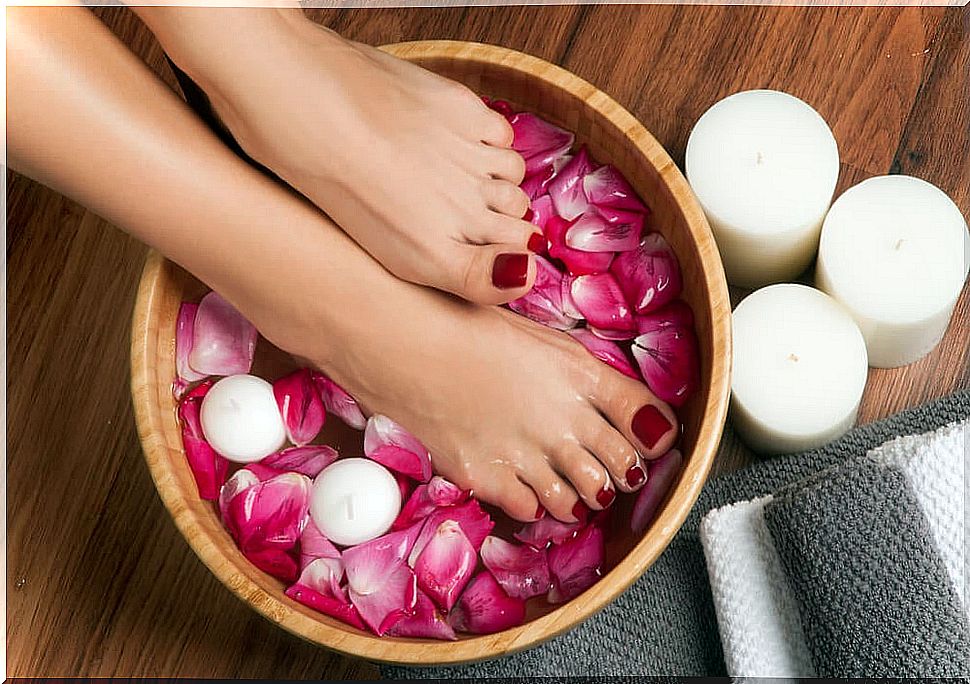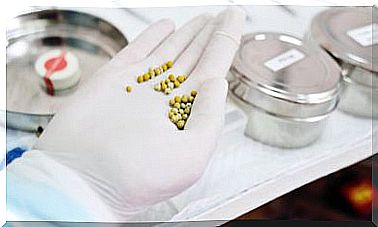How To Avoid Ankle Swelling
Ankle swelling can be the consequence of fluid retention, improper posture, poor circulation, or the effects of pregnancy. It usually occurs in overweight people, and in prolonged sedentary or immobility situations.
Although in normal health situations it does not usually represent serious problems, this discomfort could be a warning sign about a medical condition that requires attention. Here’s why it happens and how to avoid this condition.
Why are the ankles swollen?
At the end of the day, you may feel like your ankles are swollen. Especially if you sat for long hours, took a long trip, or left your legs in the same position for a long time. This occurs because, being immobile, the muscles do not contract and relax at the normal rate.
So, the valves in the veins that help the blood return to the heart, do not do it at the proper rate. Consequently, body fluids do not flow well and accumulate, especially when standing still. According to a National Health Services publication , swelling can also be caused by the following:
- Excess salt in meals
- Being overweight
- Pregnancy
- Certain medications (for blood pressure, birth control pills, antidepressants, or steroids)
- An injury
- An insect bite
- Kidney, liver, or heart problems
- A blood clot
- An infection
How to avoid ankle swelling?
Inflammation in this area is characterized by redness in the area and a feeling of tension in the skin. Do you want to know how to prevent it? Here are some suggested steps you can take to avoid swollen ankles.
Move your legs every hour
If you work sitting up, get up every 1 – 2 hours and walk in place to reactivate the blood flow to your legs. If you go on a long trip, do the same; try to stand up and stretch your legs. Another option is to walk every day.
This practice, according to the Arthritis Foundation , is not only beneficial for losing weight and toning muscles, but also for improving circulation, increasing heart rate, lowering blood pressure, and strengthening the heart.
Do exercise
As we mentioned in the previous point, doing some physical activity such as walking improves circulation and allows blood to flow correctly throughout the body. Also, you can choose to ride a bike or jog at least three times a week for 20 minutes per session.
Lose weight
If you are overweight, it is best to change certain habits and adopt a healthier lifestyle, especially in diet. When losing weight, the legs bear less weight, consequently, they become deflated and do not retain fluid. We recommend that you consult with a nutritionist to determine the best meal plan as the case may be.
Elevate your feet at night
When you finish the work day, put your legs up with the help of cushions, or put your feet on the wall or a piece of furniture, and stay that way for a few minutes. This will prevent blood from pooling in your ankles. You will most likely feel a “tickle.” If it hurts, put your feet down and try again in a few minutes.

Wear orthopedic stockings
In cases of chronic inflammation, doctors prescribe this treatment, which consists of wearing a boot that adjusts and puts pressure on the feet, ankles, and calves . This helps the veins move blood to the heart.
Wear comfortable shoes
Believe it or not, footwear can also be one of the causes of ankle swelling. Try to wear baggy shoes and, if they have laces, do not tie them too tightly. If you have the option of being barefoot for a while, take advantage!
Soak your feet in cold water
Another good option to avoid inflammation is to put a good amount of cold water in a container and immerse your feet there, up to the ankles. Leave a few minutes and you will see that the feeling of swelling will diminish.

Eat little salt
As an article from the Cleveland Clinic indicates , reducing your salt intake is one of the small changes you can make to prevent swelling of your feet and ankles due to fluid retention. This also includes stopping canned or processed products, which are often high in sodium.
It might interest you: How to limit salt intake? 8 strategies
Change medication
Check with your doctor if you take any medications that may be causing your ankle swelling. For over-the-counter remedies, check the package insert for adverse effects.
Drinking water
A Humanitas University publication suggests that one of the most useful recommendations when it comes to avoiding fluid retention is to drink 1.5 to 2 liters of water a day.
As you can see, there are many simple options to do to prevent your feet and ankles from swelling. Start today to make small changes in your routine. Remember that physical activity and hydration are a fundamental part of well-being.









